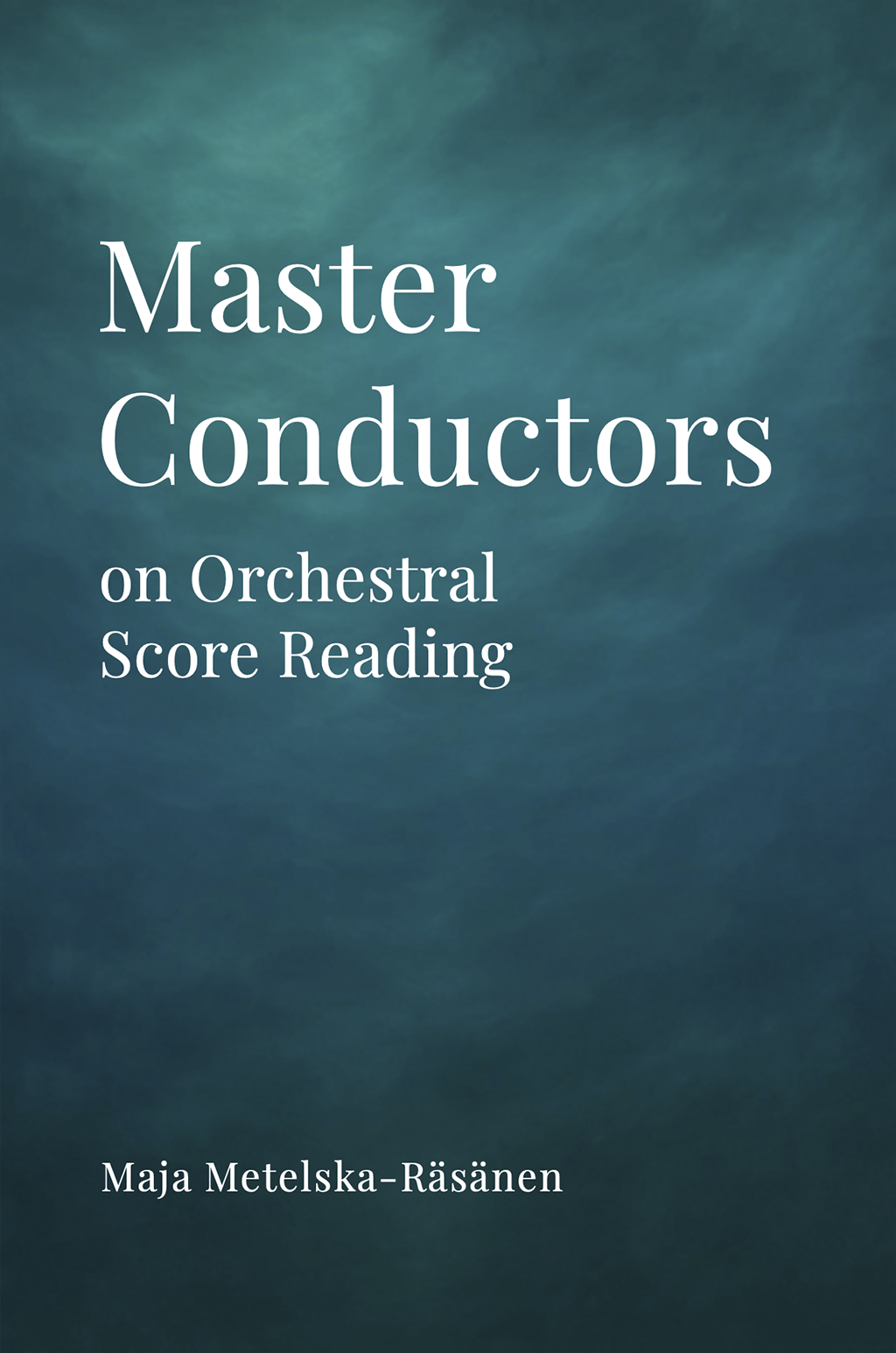Maja Metelska-Räsänen
Master Conductors on Orchestral Score Reading
What does it truly mean to read an orchestral score, and how can it be done? This book offers an in-depth exploration of orchestral score reading, presenting approaches employed by both historical and contemporary professional conductors from around the world. Through interviews, a questionnaire, and research, it reveals the diversity of methods and techniques conductors use to read, analyze, and interpret scores. Emphasizing the intrinsic connection between score reading and conducting, the book illustrates how a conductor’s vision of a piece is formed, and how it may evolve in collaboration with the orchestra. It invites students, musicians, and anyone interested in orchestral music into a masterclass on the art of score reading.
Available in both paperback and hardcover formats from Lulu and also directly from the publisher using the button below.
Contents
Preface
Introduction
Section 1: Historical Perspectives
- Hermann Scherchen and the Ideal Conception of a Piece
- Sir Adrian Boult’s Systematic Technique of Score Reading
- Symbols and Markings in Nicolai Malko’s Method
- Nadia Boulanger’s Teaching of Score Reading
- Eugene Ormandy and Inner Hearing of the Score
- Ilya Musin and the Process of Reading the Score
- Conductor as Interpreter in Eugen Jochum’s Phenomenology
- Erich Leinsdorf and Faithfulness to the Composer
- Gunther Schuller and the Quest to Know the Score
- Sir Georg Solti’s Reflections on Score Reading
- Creative Score Reading in Witold Rowicki’s Aesthetic Approach
- Stanisław Skrowaczewski on Interpretation and Recordings
Section 2: Contemporary approaches
Interviews with conductors: Antoni Wit, Jorma Panula, Osmo Vänskä, Charles Olivieri-Munroe, Anna-Maria Helsing, Tito Muñoz, Philippe Bach, Maria Badstue, Tomas Djupsjöbacka, Ilona Dobszay-Mesko, James Sherlock, Chloé Dufresne, Vlad Vizireanu, Eero Lehtimäki
Section 3: Results of the Score Reading Questionnaire
Section 4 : Conclusions
- Overview
- Score Reading Methods
- The Stages and Focus of Score Reading
- The Composer’s Language and Background of the Piece
- Score Reading Tools and Orchestral Imagination
- Transpositions and Other Challenges in Score Reading
- Marking the Score
- Listening to Recordings
- Score Reading and Conducting
Bibliography

Maja Metelska-Räsänen
Maja Metelska-Räsänen, D.Mus.A., is a conductor with extensive experience in teaching score reading to conducting students. A graduate of both the Sibelius Academy and the Chopin University of Music, she has conducted professional orchestras around the world. Passionate about score reading, she is fascinated by its multifaceted nature and its fundamental role in the conductor’s art.
More on Score Reading
Score Reading of Orchestral Music
A comprehensive guide to orchestral score reading tailored for conductors, musicians, music readers, and students. This invaluable resource offers techniques for synthesizing scores, creating a sounding image of the score in the mind, reading in clefs, decoding single and multiple transpositions, and creating piano reductions. Accompanied by a rich selection of orchestral music examples spanning the 18th to 20th centuries,

